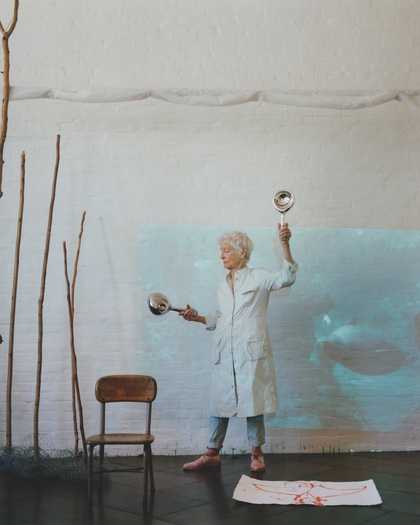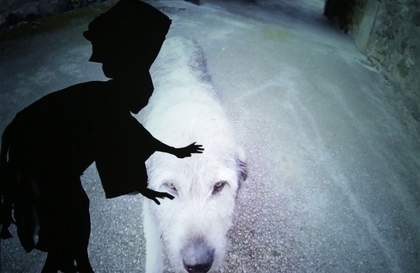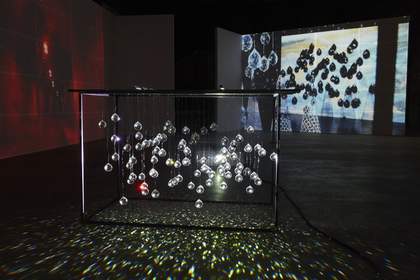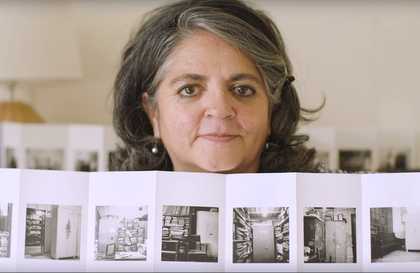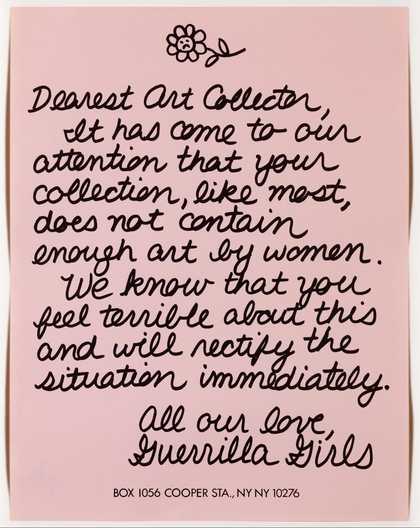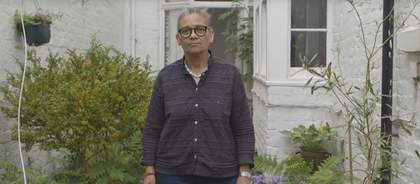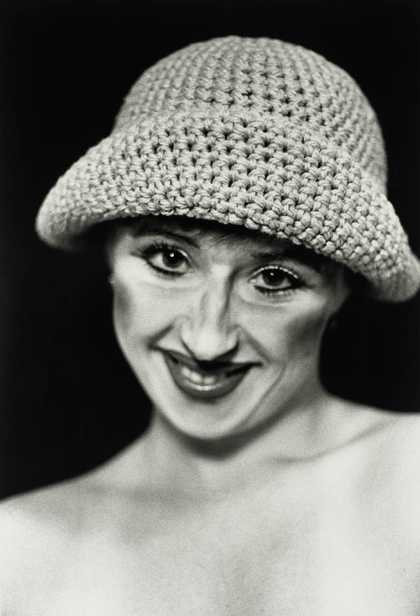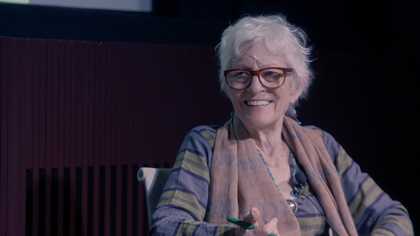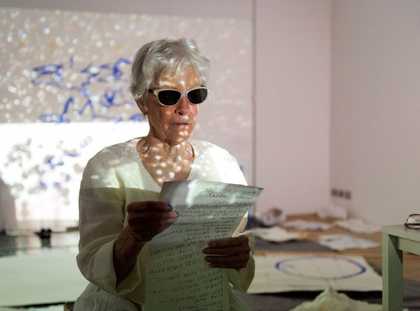
Joan Jonas
Draw Without Looking 2013
Performed as part of BMW Tate Live: Performance Room, Tate Modern, 28 February 2013
Photo © Tate
In 1970, a sculptor called Joan Jonas travelled from New York to Japan. There, she discovered fourteenth-century Noh theatre and bought a brand new piece of technology: a Sony Portapak video camera. She was about to become a pioneer: the first person to use live video in her artistic work.
Jonas grew up immersed in the New York art scene. Her family took her to galleries and the opera, introducing her to poetry, jazz and magic shows. When she discovered performance art she found her path. She destroyed all her sculptures and set out to create her own multimedia form of art.
Using props, and with the occasional help of dancers and musicians, Jonas creates performance ‘pieces’ for her audiences. She incorporates poetry, masks, live painting, costume – and even her dog, Ozu.
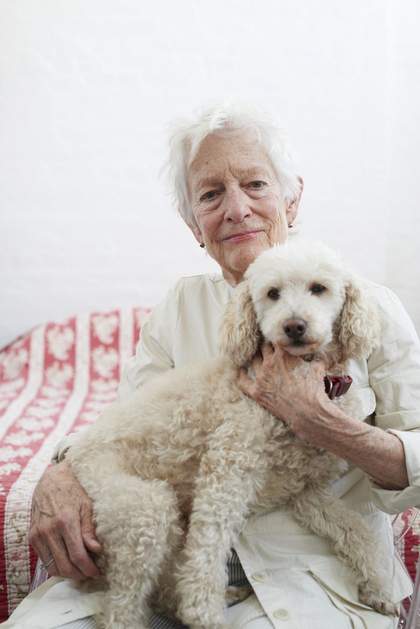
Joan Jonas and Ozu ©Toby Coulson
Jonas is interested in landscape and mythology. In The Juniper Tree, taken from the Grimm’s fairy tale, she explored how stories are told through repetition, repeatedly painting the head of the boy who is killed by his wicked stepmother. A lot of her work is about how women are seen, and how they see themselves. She has often used mirrors, as in her solo piece, Mirror Check, where she inspected every part of her naked body with a hand mirror.
She does not expect people to understand her vision straight away, but asks you to take time to experience a piece, and perhaps even view it several times. In her eighties, she still travels the world to feed her curiosity and to keep making art.
Wanting to know more about the artist, we asked Jonas about her career, inspirations and favourite artworks ...
What inspires you in your life?
Reading a book. Listening to music. Looking at paintings. Sculpture. Film and video. Walking along the river, in the forest and swimming in the sea, the river and the lake.
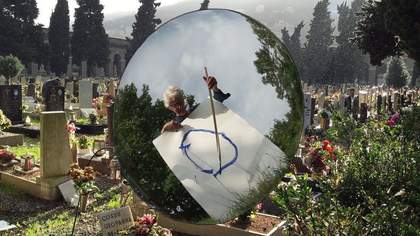
Joan Jonas, Stream or River, Flight or Pattern (2016 - 2017) © Joan Jonas : Artists Rights Society (ARS), New York : DACS, London.
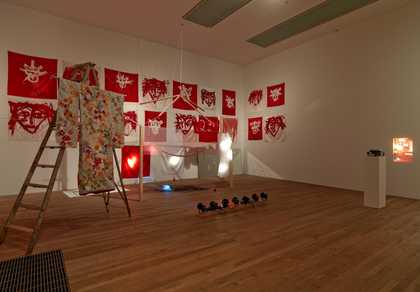
Joan Jonas
The Juniper Tree (1976, reconstructed 1994)
Tate
What was your favourite subject at school?
Art (art history and the practice of painting, sculpture and drawing).
What is your favourite medium, and why?
I don’t have a favourite, I use many types of media in my work.
If you weren’t an artist, what would you be?
A scientist, or a poet musician.
What advice would you give to young artists today?
Love what you do. Work hard and share with your peers!
If you could only save three artworks in the world, which would they be?
The paintings of Kerry James Marshall, Angkor Wat in Cambodia and the city of Venice.
This interview is an extract from The Bigger Picture: Women Who Changed the Art World by Sophia Bennett and Manjit Thapp. Text © Sophia Bennett and Interview © Joan Jonas

